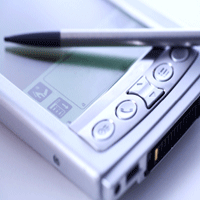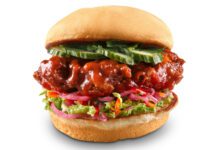Plug into the latest foodservice-based tech trends.
What are the popular new technologies?
Colin Moore: During our business transformation, we overhauled our technology. Stephen Gillett delivered new insights while challenging us on how we thought about the business, our customer relationships and the experience our customers and partners have. The sweeping reforms he initiated, including making Wi-Fi free in all U.S. company-operated stores last year, have guided us through our transformation.
Ross Munro: At Chartwells, we know students are the first to embrace new technology…. What began as declining balance cards evolved to debit- and credit-card payments. We’re now looking at mobile payment that will add value for customers. Self-ordering kiosks and desktop ordering also give customers quick, convenient service. The kiosks allow patrons to customize their orders by using touch screens. Menu screens are designed to point customers to high-margin items and up-sell to combos. Smartphone apps are something we’re also working on.
How are tech trends benefitting business?
Munro: We introduced back-office technology allowing us to manage menu planning and production more effectively. For example, we have smart-chest technology in place. It’s a web-based menu app designed to drive satisfaction, participation and profitability through menu management and reporting. Our smart-chest database adds recipe innovation, seasonality and market trends to cycle menus for target audiences. We’re also actively embracing smartphone and iPad technology.
Moore: We’ve implemented an online job application system in North America, and online labour scheduling is currently testing in select stores. Store laptops are used in Canada, the U.S. and the U.K., which keeps store partners connected. The new POS system with a scanner allows mobile payment, giving customers the fastest, most convenient way to pay.
How are businesses tapping into debit technology?
Moore: In Canadian stores, customers can pay with cash, debit, credit, Starbucks card or with our new mobile payment option through our app, using their iPhone or iPod Touch.
Have cashless payment systems helped or hindered revenues?
Munro: They’ve helped Chartwells. We recently analyzed our check averages by method of payment, and cashless payments were almost double compared to cash. That certainly covers the added cost of providing the technology.
Moore: Starbucks Canada launched mobile payment for the Starbucks Canada app for iPhone last November. It’s the only quick-service restaurant mobile payment platform and the largest mobile pay program in Canada. Mobile supports our commitment to innovating and continuously improving the customer experience. Available on any iPhone, the free app provides customers with a faster, more convenient way to pay.
How are QR codes helping business?
Munro: We currently use QR codes to promote events, contests and coupons. Codes are directly linked to our client’s Facebook pages or DineOnCampus websites. We also use QR codes to gather email addresses as another way to connect directly with our students.
Moore: The first use of a QR code was in the summer of 2011 as part of our frappuccino promotion. The QR code was placed on a banner that directed customers to an online scavenger hunt with Lady Gaga called SRCH. Today, we’ve evolved the use of QR codes to be included on the new coffee packaging that has started to show up in stores and grocery stores. When a customer scans the QR code they’re taken to a mobile web page showcasing the coffee description, how-to brew tips and other coffees as well.
Colin Moore, president, Starbucks Canada
Russ Munro, president, Chartwells, a division of Compass Group Canada
Next: Foodservice Trends in Operations





















